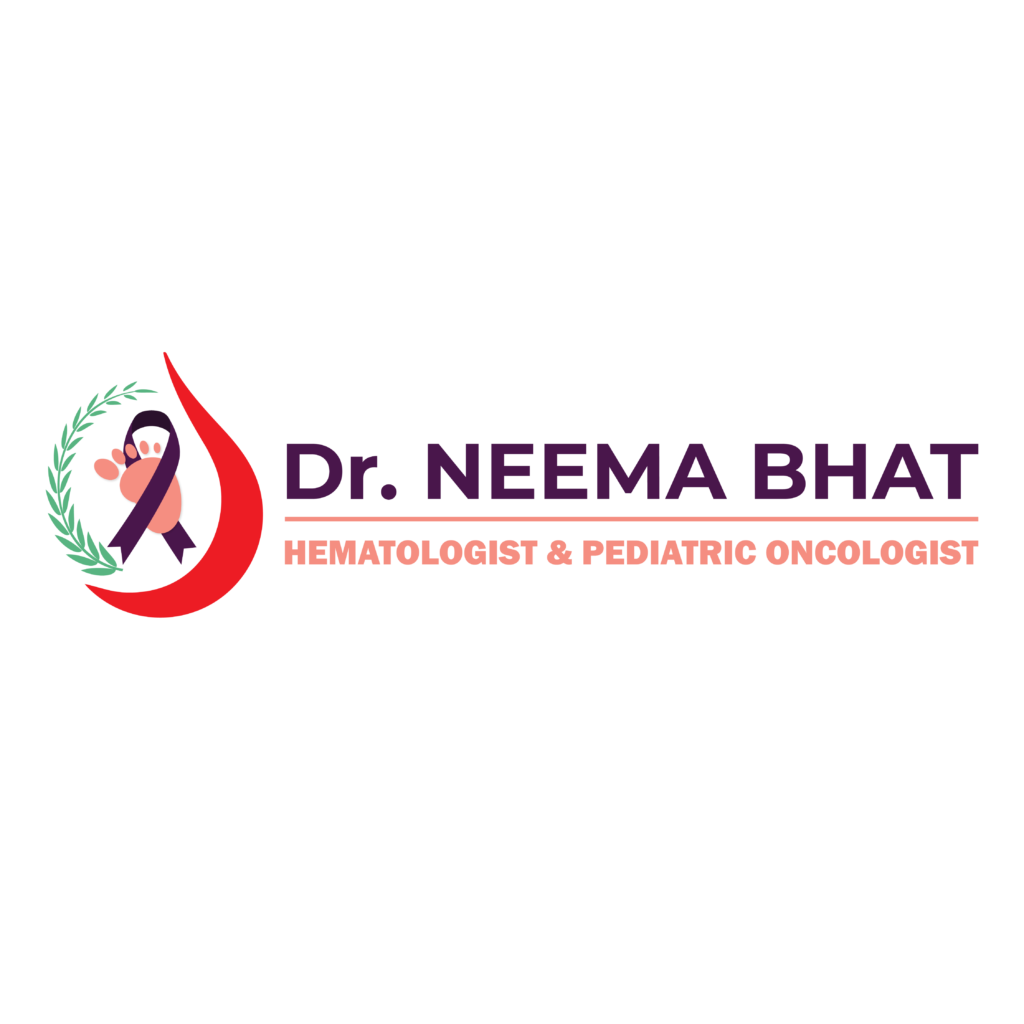Leukemia
Submit Your Phone Number!
We will contact you soon
Get Our Help
Call us to book your appointment with Dr. Neema Bhat. Cancer can be cured if diagnosed early.
+91 78997 56677

Leukemia Treatment in Bangalore
Dr. Neema Bhat is a hematologist based in Bangalore, India, who specializes in the treatment of leukemia and other blood disorders. If you have been diagnosed with leukemia, Dr. Neema Bhat can work with you to develop a personalized treatment plan to manage your condition. Treatment options for leukemia may include chemotherapy, radiation therapy, stem cell transplantation, targeted therapy, or a combination of these treatments, depending on the type and stage of the disease.
It’s important to choose a hematologist who has experience in treating leukemia and whom you feel comfortable with. If you would like to consult with Dr. Neema Bhat for your leukemia treatment, you can reach out to her clinic for an appointment.
What is Leukemia?
Leukemia is a type of cancer that affects the blood and bone marrow, the spongy tissue inside bones where blood cells are made. In leukemia, the body produces abnormal white blood cells that do not function properly and tend to build up in the bloodstream, leading to an increased risk of infections, anemia, and easy bleeding. There are four main types of leukemia, acute lymphocytic leukemia (ALL), acute myeloid leukemia (AML), chronic lymphocytic leukemia (CLL), and chronic myeloid leukemia (CML). Treatment for leukemia may include chemotherapy, radiation therapy, stem cell transplantation, or targeted therapy, and the choice of treatment depends on the type of leukemia and other individual factors.
Symptoms of Leukemia
The symptoms of leukemia can vary depending on the type and stage of the disease. Some common symptoms include:
- Fatigue: People with leukemia often feel tired and have no energy.
- Shortness of breath: This can occur if the leukemia cells are affecting the functioning of the bone marrow and reducing the production of red blood cells.
- Anemia: People with leukemia may have anemia, which is a shortage of red blood cells. This can cause weakness, pale skin, and increased heart rate.
- Easy bleeding or bruising: Leukemia can reduce the production of platelets, which help the blood to clot. This can lead to easy bleeding or bruising.
- Pain or swelling in the bones or joints: Leukemia cells can collect in the bones or joints, causing pain or swelling.
- Fever: People with leukemia often have fevers without any other apparent cause.
- Night sweats: Excessive sweating at night can be a symptom of leukemia.
- Weight loss: Some people with leukemia lose weight without trying.
- Infections: People with leukemia are more susceptible to infections due to the abnormal white blood cells not functioning properly.
It’s important to note that these symptoms can also be caused by other conditions, so it’s always best to seek medical advice if you are experiencing any persistent symptoms.
Types of Leukemia
Types of leukemia vary depending on the type of cell it affects and its severity/aggressiveness. The two main categories of leukemia are:
Acute leukemia: Blood cancer cells called Blasts are excess in number and cause cancer to progress very fast and can make a patient very sick very fast. They need to be diagnosed and treated as early as possible. These are usually life-threatening if treatment is delayed.
Chronic leukemia: These blood cells accumulate more slowly and can function normally for some time. They don’t cause other blood counts to drop drastically. Some forms of chronic leukemia initially cause minimal or no early symptoms and can go unnoticed or undiagnosed for years. They are also the more curable types of blood cancer.
Leukemias are also classified based on the type of cell they affect:
- Acute lymphocytic leukemia (ALL): This is the most common type of leukemia in young children and young adults. ALL can also occur in older adults but is less common.
- Acute myelogenous leukemia (AML): It occurs in children and adults. AML is the most common kind of acute leukemia in adults
- Chronic lymphocytic leukemia (CLL): With CLL, which is the most common chronic adult leukemia, patients may feel well for years without needing any treatment. This is seldom ever seen in children.
- Chronic myelogenous leukemia (CML): This type of leukemia mainly affects adolescents and adults. A person with CML may have minimal or no symptoms for months or even a few years before entering a phase in which the leukemia cells/blasts grow more quickly.
- Other types: Other, rarer types of leukemia exist, including hairy cell leukemia, myelodysplastic syndromes, and myeloproliferative disorders.
Causes of Leukemia
The exact causes of leukemia are not fully understood, but several risk factors have been identified, including:
- Age: The risk of developing leukemia increases with age, with most cases occurring in people over the age of 55.
- Genetics: Certain genetic mutations and inherited genetic disorders, such as Down syndrome, can increase the risk of leukemia.
- Exposure to radiation: Exposure to high doses of radiation, such as in atomic bomb survivors, or long-term exposure to low levels of radiation, such as in some jobs, can increase the risk of leukemia.
- Exposure to certain chemicals: Exposure to certain chemicals, such as benzene, a chemical used in the manufacturing of rubber and plastics, has been linked to an increased risk of leukemia.
- Previous cancer treatment: People who have received radiation therapy or chemotherapy for other cancers may have an increased risk of developing leukemia.
- Smoking: Smoking is a known risk factor for many types of cancer, including leukemia.
While these risk factors can increase the likelihood of developing leukemia, it’s important to note that many people with these risk factors never develop the disease, and many others who do have leukemia have no known risk factors.
Diagnosis of Leukemia
If you have signs or symptoms that might be worrisome for leukemia, you may undergo the following diagnostic exams:
- Physical exam: Your doctor will likely look for physical signs of leukemia, such as pale skin from low Hemoglobin, swelling of lymph nodes, and enlargement of the liver and spleen in the abdomen.
- Blood tests: By looking at a sample of your blood, the doctor can determine if you have abnormal levels of red or white blood cells or platelets which may suggest leukemia. Blood counts, as well as types of cells called blasts, are examined under a microscope to diagnose leukemia. Sometimes, however, leukemia cells stay in the bone marrow and may not be seen in circulation.
- Bone marrow test: Your doctor (or Hematologist) may perform a procedure to remove a sample of bone marrow from your hipbone. The bone marrow is removed using a long, thin needle. This is usually a quick bedside procedure and does not require deep anesthesia. The sample is then sent to a laboratory to look for leukemia cells.
Treatment for Leukemia
The treatment of leukemia depends on several factors, including the type of leukemia, the stage of the disease, and the person’s overall health. Some common treatments for leukemia include:
- Chemotherapy: Chemotherapy is a type of cancer treatment that uses drugs to destroy cancer cells. It’s often used to treat leukemia and may be given as a pill, injection, or through a vein.
- Radiation therapy: Radiation therapy uses high-energy radiation to destroy cancer cells. It may be used to treat localized areas of the body affected by leukemia.
- Stem cell transplantation: In this procedure, the patient’s bone marrow is replaced with healthy stem cells from a donor. This treatment can help to restore normal blood cell production and is often used in severe cases of leukemia.
- Targeted therapy: Targeted therapy is a type of treatment that targets specific molecules involved in the growth and survival of cancer cells. This treatment may be used in addition to chemotherapy or radiation therapy.
- Surgery: Surgery may be used to remove a localized area of leukemia cells, such as the spleen, in some cases.
- Supportive care: People with leukemia may also receive supportive care, such as blood transfusions, to manage symptoms and side effects of treatment.
It’s important to note that leukemia is a complex disease and treatment plans are tailored to each individual case. The treatment plan may also change over time as the patient’s condition changes.
